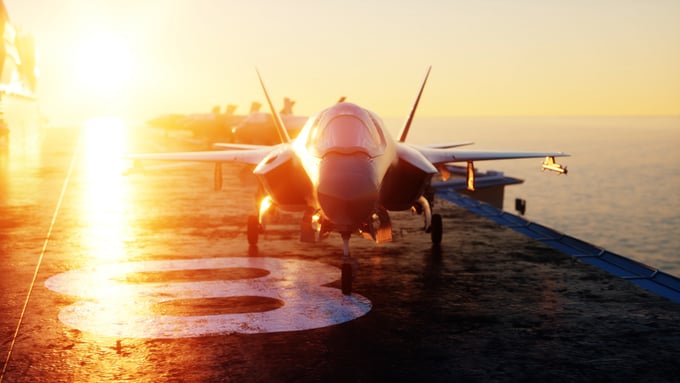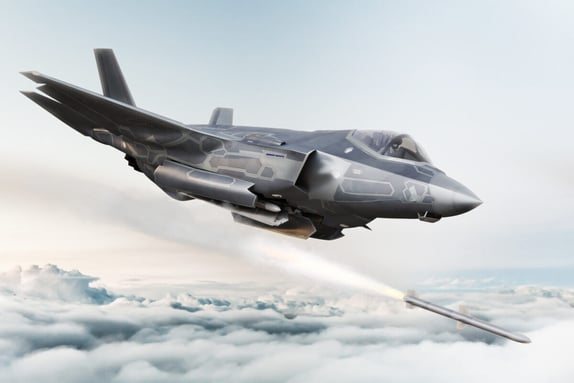A Win for Aerospace: A Cutting-Edge Thermoplastic Nanocomposite that Withstands Galvanic Corrosion
While galvanic corrosion is a familiar engineering problem in the aerospace industry and the military, in recent years it’s become an increasingly significant concern. Because so many different materials are used in today’s advanced equipment, particularly aircraft, galvanic corrosion has become more common and more widespread. One U.S. Air Force study found that 80% of structural failures were due to cracks originating from galvanically driven corrosion pits around fastener holes.[i]
According to a 2018 study (based on FY16 data), the estimated annual cost of corrosion for Department of the Navy equipment is $8.63 billion, or 23.2% percent of the Navy’s total expenditure on equipment maintenance. Moreover, Navy aviation vehicles and missiles, and Marine Corps ground assets, suffered an estimated 392,040 non-available days (NADs) as a result of corrosion. This represents 27.5% of the total availability loss for this equipment.[ii]
In the aviation industry, corrosion of metals used in vehicle structures and engines accounts for 25% of all metal component failures. As the risk and cost of corrosion damage increases with aircraft age, the time spent on maintaining older aircraft can exceed the time spent in the air.[iii]
Until now, the only engineering solution available to prevent galvanic corrosion has been to avoid contact between dissimilar materials (notably, aluminum and carbon fiber reinforced polymer matrix composites [CFRPs]) in any application where moisture may be present. Needless to say, this limitation imposes an array of new challenges that work against efficiency and elegance in designing advanced equipment.
However, thanks to a recent breakthrough in material design, engineers now have another option in the fight against corrosion.
Alpine Advanced Materials’ HX5 is an advanced nanocomposite that is not only resistant to galvanic corrosion, but has the strength of aluminum at just half the weight. It also has greater resistance to extreme environmental conditions and has dramatic manufacturing advantages, in some cases reducing turnaround time from several weeks to just a few days.
HX5 was developed, certified and exhaustively tested for aerospace by Lockheed Martin over eight years, with more than $50M invested in its research and development. HX5 been certified for use in the manufacture of components for jet fighters, high-speed helicopters, amphibious transport vehicles, missiles, rockets, and satellites – all of which have a high susceptibility to corrosion.
With its singular combination of thermal and mechanical properties, HX5 is an effective material available in today’s market to protect against galvanic corrosion and contribute to a safer and more robust aerospace environment.
Alpine Advanced Materials holds exclusive rights to HX5, and is currently working with commercial aerospace, the Department of Defense, oil and gas, and our nations finest defense companies to deliver custom-engineered parts to solve the world’s most demanding performance challenges.
[i] Larsen, Kathy Riggs (2017, May 24). A New Approach to Corrosion-Resistant Aerospace Designs. Retrieved May 1, 2019, from https://www.materialsperformance.com/articles/material-selection-design/2017/06/a-new-approach-to-corrosion-resistant-aerospace-designs
[ii] Herzberg, E. F., & Chan, T. K., Guo, S., Morris, A. K., Stevenson, A. & Stroh, R. F. (2018, March). Estimated Impact of Corrosion on Cost and Availability of DoD Weapon Systems – FY18 Update. Retrieved May 1, 2019, from https://www.corrdefense.org/static/media/content/11393.000.00T1-March2018-Ecopy.pdf
[iii] Saadiqin, N. F. & Zauti, B. A. (2014, April 19). Corrosion in Aerospace Materials. Retrieved May 1, 2019, from https://www.slideshare.net/fatihahsaadiqin/corrosion-in-aerospace-materials




.png?height=383&name=Blog%20Photos%20(24).png)
